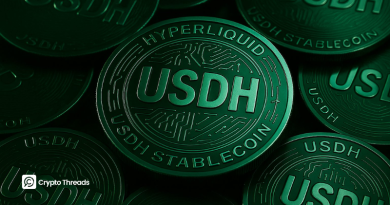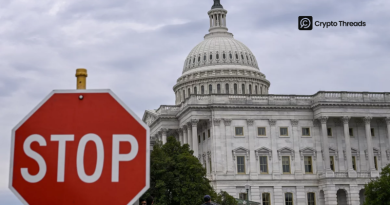GENIUS Act Ban May Push Trillions Into Tokenized Assets
Key Takeaways
- The GENIUS Act prohibits yield-bearing stablecoins, prompting institutions to seek compliant yield alternatives.
- Tokenized real-world assets could attract trillions, covering Treasurys, corporate bonds, commodities, equities and real estate.
- Uniform Labs’ Multiliquid aims to provide programmable, real-time swaps between stablecoins and tokenized assets.
- Tokenization may democratize access to high-barrier investments like private equity and commercial real estate.
- The current 26 billion USD tokenization market could expand significantly beyond private credit and government bonds.
GENIUS Act Ban May Accelerate Tokenization Growth
The United States’ GENIUS Act is being hailed as a landmark for stablecoin regulation, set to encourage adoption both domestically and internationally. Yet one key provision, a total ban on yield-bearing stablecoins, may have an unintended effect by pushing institutional investors toward tokenized real-world assets in search of returns.
Will Beeson, a former Standard Chartered executive and now CEO of Uniform Labs, told Cointelegraph that the restriction will force capital to flow into compliant yield-generating products. He explained that holding large amounts of non-interest-bearing stablecoins exposes investors to inflation and opportunity cost. Instead, institutions will increasingly prioritize programmatic access to risk-free yield and the flexibility to move seamlessly between cash and high-quality assets.
Beeson believes the impact will be significant, with trillions of dollars potentially shifting into tokenized markets. He described the coming shift as the natural outcome of a market that is unwilling to let capital sit idle.
From Idle Stablecoins to Tokenized Treasurys and Beyond
The GENIUS Act’s restrictions have effectively reshaped the conversation about where institutional liquidity will go next. Without the option to earn interest directly on stablecoins, asset managers, fintechs and stablecoin issuers are looking to tokenized US Treasurys, money market funds and other compliant instruments as viable alternatives.
To meet this demand, Beeson’s Uniform Labs is building Multiliquid, an institutional liquidity platform that enables real-time, programmable conversions between stablecoins and tokenized assets. Its open-architecture design allows compliant issuers to integrate without formal commercial agreements, making access easier for a wide range of market participants.
While Beeson declined to disclose specific partners, he confirmed that several major institutions, fintech companies and stablecoin issuers are already involved ahead of the platform’s production launch later this year.
The shift toward tokenization also reflects a broader industry vision, as described by Sandra Waliczek of the World Economic Forum. She highlighted tokenization’s ability to democratize investment in asset classes historically reserved for high-net-worth individuals such as private equity and commercial real estate by enabling fractional ownership.
Currently, the global tokenization market is worth around 26 billion USD, dominated by private credit and government bonds. However, Beeson believes its scope will widen rapidly to include corporate bonds and structured credit, commodities such as gold and energy, equities in both public and private markets, real estate funds and direct property ownership, and private equity funds with their underlying assets.
According to Beeson, this is not just an incremental adjustment but the beginning of a new phase in the digital asset economy, where liquidity, compliance and yield converge. He stressed that the next phase is not about holding idle stablecoins but about having the ability to move instantly between cash and high-quality assets while remaining fully compliant.
This evolution suggests that the GENIUS Act, while designed to bring clarity and stability to the stablecoin market, could end up serving as a powerful accelerator for the tokenization industry. If the current momentum continues, the boundaries between cash-like instruments and tokenized investment products may blur, creating a more dynamic and integrated financial ecosystem for both institutions and retail investors.



